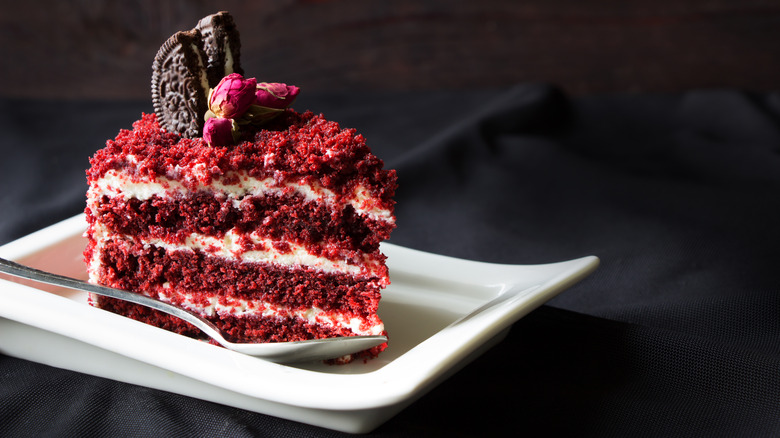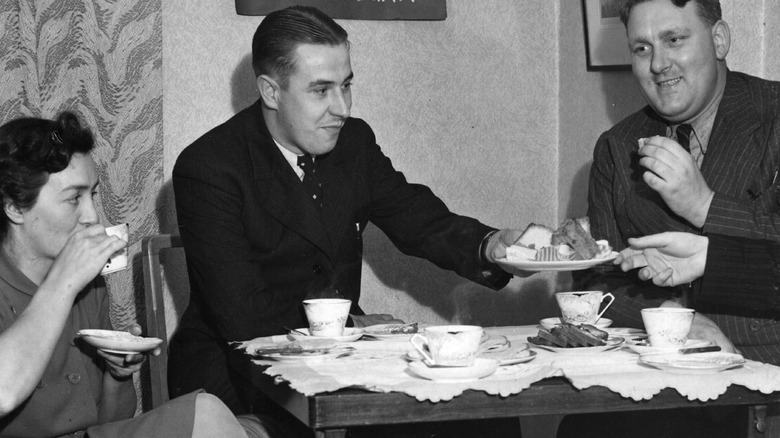How This 79-Year-Old German Cake Managed To Survive WWII Bombings
There's something so intriguing about ancient foods. Whether it's recreating recipes dating back to Roman times or rediscovering a generations-old tradition from Asian cuisine, it can be magical learning about the foods of yore — especially when they've been well-preserved. In one of the latest discoveries, Food & Wine shared that a 79-year-old cake was recently unearthed in Lübeck, Germany, with its decorations still intact. This after surviving 400 tons of bombs that were dropped on the town on March 28th, 1942 during a WWII air raid led by the British Royal Air Force that leveled more than 10,000 buildings and 30% of the city.
As one of Lübeck's oldest streets, Alfstrasse 18, was being excavated this year, archaeologists found one of the best-preserved foods to date — a hazelnut cake with an almond filling. Even the wax paper that covered the cake was intact. Though, this is far from the first highly preserved item to be found in Lübeck.
The German town dates to 1143 and has been declared an UNESCO world heritage site that's been protected since 1987 (via Live Science). The city served as an international port located on the Baltic Sea, but thanks to its subsoil, the earth beneath Lübeck has preserved millions of objects, four million of which have been recovered. Dirk Rieger, head of the Department of Archaeology for the Hanseatic City of Lübeck Historic Monuments Protection Authority, told Live Science that everything from full medieval ships to children's shoes have been found during excavations of Lübeck.
The cake was so well preserved because of the soil in the town
According to Food & Wine, archaeologists believe that the bottom floor of the house on Alfstrasse 18 where the cake was found fell in when the bombs dropped. That, they theorized, caused the building to fall into the basement, which was where the kitchen was located. So, as the ash and debris rained down, the wax paper-covered cake was preserved so well that even the piped icing is still recognizable some 79 years on — even though it's a bit charred in appearance. "It is heavily charred and blackened with soot on the outside, but has been shrunk to only a third of its original height due to the heat," the excavation manager at the site, Lisa Renn, explained in the article.
It also helps that the subsoil into which the building and the cake fell is perfectly suited for preserving artifacts — in this case, a cake likely intended for a Palm Sunday celebration that would have been the day after the bombing, according to Food & Wine. "The subsoil is made of clay, so the preservation for organic material is awesome," Rieger told Live Science. "You dig down like 7 meters [23 feet], and you are in the 1100s. We have every single feature of urban and mercantile activity throughout eight or nine centuries, which is absolutely unique in the way it's been preserved," he added. Since so few foods have been so incredibly well-preserved, the charred and dehydrated cake is a feat for archaeologists who can now get an even better glimpse into that moment in history nearly 80 years ago.

